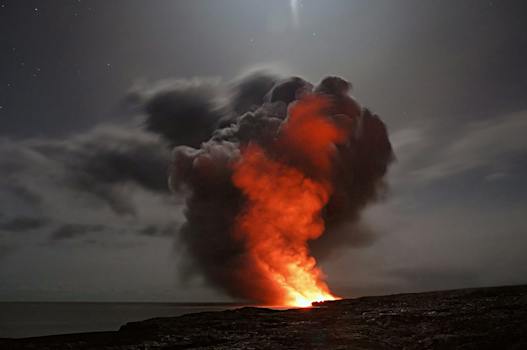

-
Table of Contents
"Unleash the Power: Explosions that Ignite the Extraordinary!"
Introduction
Explosions refer to sudden and violent releases of energy, resulting in the rapid expansion of gases, intense heat, and the generation of shockwaves. They can occur due to various factors, such as chemical reactions, combustion, or the release of stored energy. Explosions can have devastating consequences, causing destruction, injuries, and loss of life. Understanding the science behind explosions and implementing safety measures is crucial in preventing and mitigating their impact.
The Science Behind Explosions: Understanding the Chemical Reactions
Explosions have captivated human curiosity for centuries. From fireworks to dynamite, these powerful events have both fascinated and terrified us. But what exactly causes an explosion? To understand the science behind explosions, we must delve into the world of chemical reactions.
Chemical reactions are the driving force behind explosions. At their core, explosions are rapid and violent chemical reactions that release a tremendous amount of energy in a short period. This energy is what creates the explosive force that we witness. To understand these reactions, we need to explore the concept of exothermic reactions.
Exothermic reactions are chemical reactions that release energy in the form of heat. When a substance undergoes an exothermic reaction, the energy released is greater than the energy required to initiate the reaction. This excess energy is what fuels the explosion. The most common exothermic reactions involved in explosions are combustion reactions.
Combustion reactions occur when a fuel combines with oxygen in the presence of heat, resulting in the release of energy. The fuel acts as the source of carbon and hydrogen atoms, while oxygen provides the necessary oxidizing agent. When these elements combine, they form new compounds, such as carbon dioxide and water, releasing energy in the process.
For an explosion to occur, three essential components are required: fuel, oxygen, and an ignition source. The fuel can be any substance that can undergo combustion, such as gasoline, gunpowder, or even natural gas. Oxygen, usually obtained from the surrounding air, acts as the oxidizing agent. Lastly, an ignition source, such as a spark or flame, is needed to initiate the exothermic reaction.
Once these components are present, the explosion begins. The ignition source provides the initial energy required to start the exothermic reaction. This energy breaks the bonds within the fuel molecules, releasing a vast amount of heat. As the reaction progresses, the heat generated further accelerates the reaction, creating a self-sustaining chain reaction.
The speed at which an explosion occurs is determined by the rate of the chemical reaction. Some reactions are relatively slow, while others are incredibly fast. The rate of reaction depends on various factors, including the nature of the fuel, the concentration of oxygen, and the temperature. Higher temperatures generally result in faster reactions, as they provide more energy to break the bonds within the fuel molecules.
Understanding the science behind explosions is not only fascinating but also crucial for safety purposes. Explosions can occur in various settings, from industrial accidents to terrorist attacks. By comprehending the chemical reactions involved, scientists and engineers can develop safety measures and design structures to minimize the impact of explosions.
In conclusion, explosions are the result of rapid and violent chemical reactions. Exothermic reactions, particularly combustion reactions, release a tremendous amount of energy in a short period, creating the explosive force we witness. Fuel, oxygen, and an ignition source are the three essential components required for an explosion to occur. By understanding the science behind explosions, we can better appreciate their power and work towards preventing their destructive consequences.
Historical Explosions: Unforgettable Moments in Human History

Explosions have been a part of human history for centuries, leaving unforgettable moments etched in our collective memory. From accidental disasters to deliberate acts of destruction, these explosions have shaped the course of civilizations and changed the world as we know it. In this article, we will delve into some of the most significant historical explosions that have left an indelible mark on human history.
One of the earliest recorded explosions in history occurred in 79 AD when Mount Vesuvius erupted, burying the Roman cities of Pompeii and Herculaneum under layers of ash and pumice. This catastrophic event not only resulted in the loss of thousands of lives but also preserved the cities in a remarkable state of preservation, providing invaluable insights into ancient Roman life.
Moving forward in time, the explosion of the Krakatoa volcano in 1883 stands as one of the most powerful and destructive volcanic eruptions in history. The explosion was so immense that it was heard over 3,000 miles away, and the resulting shockwaves caused tsunamis that devastated coastal areas. The eruption also had a global impact, as the volcanic ash ejected into the atmosphere caused vivid sunsets around the world for several years.
In the realm of man-made explosions, the explosion of the Hindenburg airship in 1937 remains a haunting memory. The hydrogen-filled airship caught fire while attempting to dock in New Jersey, resulting in a massive explosion and the loss of 36 lives. This tragic event marked the end of the era of passenger airships and led to a shift towards safer modes of air travel.
Another unforgettable explosion that changed the course of history was the atomic bombing of Hiroshima and Nagasaki in 1945. These bombings, carried out by the United States during World War II, resulted in the deaths of hundreds of thousands of people and ushered in the nuclear age. The devastating power of these explosions served as a stark reminder of the destructive capabilities of nuclear weapons and forever altered the geopolitical landscape.
Moving into more recent history, the explosion of the Space Shuttle Challenger in 1986 shocked the world. Just 73 seconds after liftoff, a faulty O-ring seal on one of the solid rocket boosters led to the disintegration of the shuttle, resulting in the deaths of all seven crew members. This tragic event highlighted the risks and complexities of space exploration and led to significant changes in the way NASA approached safety protocols.
In 2001, the world witnessed one of the most horrific acts of terrorism in history with the explosion of the Twin Towers in New York City. The deliberate crashing of two hijacked airplanes into the World Trade Center resulted in the collapse of the towers, claiming the lives of nearly 3,000 people. This event not only shook the United States but also had far-reaching consequences, leading to a global war on terror and a heightened focus on national security.
Explosions have left an indelible mark on human history, shaping the course of civilizations and changing the world in profound ways. From natural disasters to man-made catastrophes, these unforgettable moments serve as reminders of the fragility of human existence and the power of destruction. As we move forward, it is crucial to learn from these historical explosions and strive for a safer and more peaceful future.
Preventing Explosions: Safety Measures and Risk Mitigation Strategies
Explosions are catastrophic events that can cause significant damage to property, infrastructure, and most importantly, human lives. They can occur in various settings, including industrial facilities, residential areas, and even natural environments. To prevent explosions and minimize their impact, it is crucial to implement safety measures and risk mitigation strategies.
One of the primary safety measures to prevent explosions is proper maintenance and inspection of equipment and machinery. Regular inspections can help identify potential issues such as leaks, faulty wiring, or worn-out parts that could lead to explosions. By addressing these problems promptly, the risk of an explosion can be significantly reduced. Additionally, implementing a preventive maintenance program can ensure that equipment is regularly serviced and repaired, further minimizing the chances of an explosion.
Another crucial aspect of preventing explosions is the proper handling and storage of hazardous materials. Many explosions occur due to the mishandling or improper storage of flammable or explosive substances. It is essential to follow strict protocols when dealing with these materials, including using appropriate containers, labeling them correctly, and storing them in designated areas away from potential ignition sources. Training employees on the safe handling and storage of hazardous materials is also vital to prevent accidents and explosions.
Furthermore, maintaining a clean and organized work environment is essential for preventing explosions. Cluttered and congested spaces can increase the risk of accidents, such as tripping or knocking over flammable materials. Regular cleaning and organizing of work areas can help eliminate potential hazards and reduce the likelihood of an explosion. Additionally, ensuring proper ventilation in enclosed spaces can prevent the accumulation of flammable gases or vapors, further reducing the risk of an explosion.
Implementing effective fire prevention measures is another critical aspect of preventing explosions. Fires can quickly escalate into explosions if not controlled promptly. Installing fire detection and suppression systems, such as smoke detectors, fire alarms, and sprinkler systems, can help detect and extinguish fires before they have a chance to cause an explosion. Conducting regular fire drills and training employees on fire safety procedures can also ensure a swift and efficient response in the event of a fire, minimizing the risk of an explosion.
In addition to these safety measures, risk mitigation strategies play a crucial role in preventing explosions. Conducting thorough risk assessments and identifying potential hazards can help develop strategies to mitigate those risks. This may involve implementing additional safety measures, such as installing explosion-proof equipment or implementing stricter safety protocols. Regularly reviewing and updating risk mitigation strategies is essential to adapt to changing circumstances and ensure their effectiveness.
In conclusion, preventing explosions requires a comprehensive approach that includes implementing safety measures and risk mitigation strategies. Proper maintenance and inspection of equipment, handling and storage of hazardous materials, maintaining a clean work environment, and implementing fire prevention measures are all crucial steps in preventing explosions. Additionally, conducting risk assessments and developing effective risk mitigation strategies can further reduce the likelihood of an explosion. By prioritizing safety and taking proactive measures, we can protect lives and property from the devastating consequences of explosions.
Q&A
1. What causes explosions?
Explosions are typically caused by a rapid release of energy, often resulting from a chemical reaction or the sudden release of pressure.
2. What are the potential dangers of explosions?
Explosions can cause severe damage to structures, injuries or fatalities to individuals, and can also lead to secondary hazards such as fires, toxic gas releases, or the spread of debris.
3. How can explosions be prevented?
Explosions can be prevented by following proper safety protocols, such as storing and handling hazardous materials correctly, maintaining equipment and machinery, and implementing effective safety measures like explosion-proofing systems or conducting regular inspections.
Conclusion
In conclusion, explosions are rapid and violent releases of energy, resulting in the sudden expansion of gases and the release of heat, light, and sound. They can occur due to various factors such as chemical reactions, combustion, or the release of stored energy. Explosions can have devastating effects, causing destruction, injuries, and loss of life. Understanding the causes and effects of explosions is crucial for safety measures and prevention strategies.












